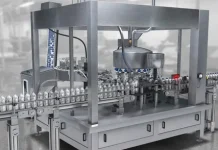Lighting has changed the way people design, build, and experience spaces. From homes to large commercial buildings, modern lighting solutions now focus on efficiency, adaptability, and sustainability. LEDs have become the standard choice because they reduce energy consumption, last longer, and offer more creative possibilities than traditional options. Two key solutions, LED strip lights and LED modules, play different but equally important roles in today’s projects.
The Role of Flexible LED Strip Lights in Modern Design
Flexible LED strip lights have gained popularity for their adaptability. They can be cut, bent, and installed in spaces where traditional lighting would never fit. Designers and architects use them in shelves, ceilings, outdoor setups, and decorative applications. For homeowners, strip lights can enhance the atmosphere of a living room, kitchen, or backyard with minimal effort.
The demand for flexibility has also made sourcing a reliable flexible led strip lights factory essential. Consistent quality ensures that strips maintain brightness, color accuracy, and long-term durability. A dependable source also provides customization options to fit project-specific needs. Without the right manufacturing quality, strip lights may fail to deliver the expected results, especially in large-scale applications.
Understanding LED Modules and Their Applications
LED modules are another important solution, widely used in signage, display boards, and industrial lighting. Unlike strip lights that spread illumination across wide areas, modules focus on delivering bright and targeted light. They are built to withstand outdoor conditions, making them a reliable choice for commercial advertising, retail environments, and large-scale installations.
For businesses, working with trusted LED Module suppliers ensures steady performance and compliance with energy standards. A good supplier provides modules that offer uniform brightness, easy installation, and long service life. Since modules are often used in high-visibility areas such as billboards and displays, reliability is critical to avoid disruptions or frequent replacements.
Comparing Strip Lights and Modules
While both solutions use LED technology, they serve different purposes. Strip lights are valued for their ability to shape spaces with indirect or decorative lighting. They are ideal when designers need flexibility and smooth distribution of light. LED modules, on the other hand, are designed for strength and precision. They are most useful when visibility and brightness are the main priorities.
In some projects, combining the two can create impressive results. For example, a retail store may use strip lights for ambient lighting and modules for highlighting signage. This combination balances aesthetics with functionality.
Factors to Consider When Choosing Lighting Solutions
When selecting between strip lights and modules, several factors come into play:
- Quality standards: Look for products tested for durability and performance. Poor-quality lighting may fade or fail quickly.
- Energy efficiency: Both strip lights and modules can save energy, but efficiency levels vary by manufacturer.
- Compatibility: As smart lighting becomes more common, choosing products that integrate with control systems is a practical decision.
- Durability: Outdoor and commercial uses require weather-resistant and long-lasting materials.
- Maintenance: Easy installation and replacement reduce long-term costs.
Making the right choice depends on the project’s goals, whether it is atmosphere, visibility, or both.
Future of LED Lighting in Commercial and Residential Spaces
The future of LED lighting is focused on personalization and sustainability. Tunable white LEDs allow users to adjust brightness and warmth depending on the time of day. RGB systems bring dynamic control for both residential and professional applications.
Sustainability is another key driver. Energy regulations are pushing manufacturers to design lighting that minimizes power use and maximizes lifespan. Recycling and eco-friendly materials are also gaining importance.
Integration with smart technology is reshaping how people interact with lighting. Smart buildings now use IoT systems to control lights automatically, improving efficiency and convenience. Whether in offices, homes, or public spaces, lighting is becoming more intelligent and responsive to user needs.
Conclusion
LED lighting solutions continue to shape the way people think about illumination. Flexible strip lights provide freedom for creative design and subtle atmosphere, while LED modules deliver power and clarity where strong visibility is needed. Both play essential roles in modern projects, from homes to large-scale commercial applications.
Choosing the right option depends on the space, the purpose, and the desired effect. By focusing on quality, efficiency, and future-ready features, designers and businesses can ensure that their lighting solutions remain reliable and effective for years to come.







